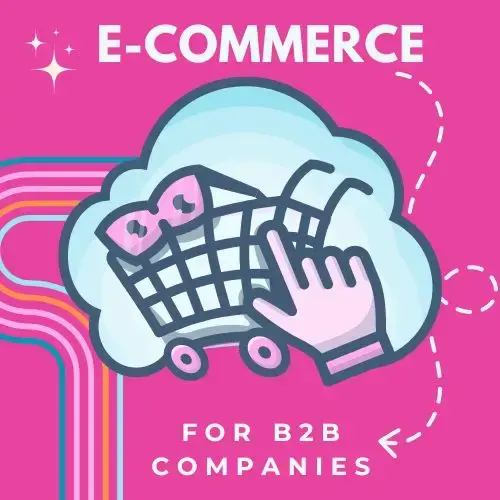How will a CRM help my business scale and grow?
McKinsey tells us many companies aren't yet reaping the benefits of technology and CRMs aren't just for giant companies with the resources to scrub...
7 min read
 Johanne
:
Aug 31, 2024 8:44:08 AM
Johanne
:
Aug 31, 2024 8:44:08 AM

Discover how to maximise your business's potential by selecting the ideal HubSpot plan tailored to your needs.
 HubSpot's pricing structure is designed to scale with your business's size and needs. From free tools to comprehensive enterprise solutions, HubSpot offers a range of plans, including CRM and Sales, Marketing, Service, and Content Hubs.
HubSpot's pricing structure is designed to scale with your business's size and needs. From free tools to comprehensive enterprise solutions, HubSpot offers a range of plans, including CRM and Sales, Marketing, Service, and Content Hubs.
Each hub has its own set of features and is available in different tiers: Starter, Professional, and Enterprise.
Understanding how each tier differs in terms of functionality and limitations is essential to determine which plan aligns with your business goals and budgetary constraints. Moreover, HubSpot's pricing can be influenced by the number of users, contacts and additional features required.
As your business grows, you may need to consider add-ons or increased contact tiers, which can affect overall costs. Transparency in pricing ensures that you can anticipate your investment and avoid unexpected expenses as you expand your usage of the platform.
To select the right HubSpot plan, start by evaluating your business needs. Identify your primary goals: improving sales efficiency and increasing leads, cross-selling and enhancing customer service, streamlining digital self-service or improving the user experience.
Then, assess HubSpot's offerings to see which features support your objectives. For instance, if lead generation is a priority, focus on Marketing Hub Plus's capabilities, such as Email campaigns, Social Posts (Market + bundle has a content remix for this) Advertising, Marketing, Landing pages, and lead nurturing tools.
For more outstanding customer service for your B2B Contracted Customers, Service Hub's automated ticketing system, Self-Service Customer Portal and Knowledge Base may be more relevant.
While team size is a factor in selecting the right plan, the primary determinant is the sophistication of your internal processes and the number of departments that need visibility. For example, when Customer Service resolves a customer ticket, does it need input from the Purchasing, Scheduling, Provisioning, or Manufacturing teams to advise on Sales Orders or return statuses?
Micro businesses use the Starter Plans, and businesses looking to streamline operations and scale usually start with Professional plans.
Enterprise plans are designed for companies needing customised elements, such as when B2B eCommerce is needed to provide self-service for contracted customers as a HubSpot module or when HubSpot is used as the customer face of existing ERP or CRMs such as Salesforce, and its sophisticated APIs facilitate integration.
It's really not that complicated. When comparing HubSpot plans, focus on core features that will have the most significant impact on your business operations. For instance, compare the automation capabilities across different tiers, as automation can save time and improve efficiency. The Professional (Pro) and Enterprise tiers typically offer more advanced automation features than the Starter tier.
Additionally, examine the analytics and reporting features. Understanding the performance of your sales and marketing efforts or customer service processes is crucial for making data-driven decisions, and higher-tier plans often provide more detailed insights.
Don't forget to review the limits on user seats, contacts and data storage, as these can quickly become a bottleneck if underestimated.
Marketing Hub includes everything you could ever need from marketing automation software - from lead generation, blogging, ads, and payment links, to email marketing! Let's take a closer look at what's included..
The Content Hub’s content marketing features include a drag-and-drop page editor, dynamic content, website themes, forms, analytics, CDN, email marketing, blogging, AB testing and SEO tools. Social media management and Content Remix providing all you need to;
Click here to read more on Content Hub.
![]() Sales Hub includes a sales CRM, sales engagement, reporting, sales automation, forecasting, as dedicated prospecting space and ABM tools. Uncover all the features and watch a demo of Sales Hub here.
Sales Hub includes a sales CRM, sales engagement, reporting, sales automation, forecasting, as dedicated prospecting space and ABM tools. Uncover all the features and watch a demo of Sales Hub here.
Service Hub‘s tools include live chat, help desk automation, conversation routing, a knowledge base, and customer surveys. Discover more about Service Hub in our blog article.
Commerce Hub is a valuable addition to HubSpot's suite of tools, offering comprehensive features for e-commerce businesses. This hub includes tools for managing online transactions, inventory, customer data and order fulfilment.
Operations Hub is one of the newer hubs - designed to provide sophisticated data tools for custom integrations. This hub empowers businesses to streamline their operational processes by providing advanced automation, reporting and analytics features.
Upgrading your HubSpot plan should be a strategic decision based on a clear return on investment (ROI). Calculate the potential revenue increase from improved lead generation and conversion rates against the cost of moving to a higher-tier plan. Consider time savings from automation and whether it allows your team to focus on more strategic tasks.
If you're considering an upgrade, use HubSpot's demos or trial periods to test the advanced features and gauge their value to your organisation. Remember, the most expensive plan isn't always the best choice if the additional features don't translate to increased profits or improved efficiency for your business.
You have several options when it comes to getting started with HubSpot. Onboarding is a guided approach where your team are supported by a HubSpot specialist (this can be HubSpot or a HubSpot Partner, read about the differences here) or you can go for an implementation which we cover in our related blog.
The successful implementation of HubSpot in your business requires a strategic approach. Start by training your team on the platform's features and best practices to ensure they are used to their full potential. Streamline your processes by integrating HubSpot with other tools and systems you are already using, which can enhance data consistency and workflow automation.
Regularly review your HubSpot usage and performance metrics to adjust your strategy as needed. As your business evolves, your HubSpot plan may need to evolve with it. Stay informed about new features and updates, and be open to adjusting your plan to keep pace with your business's growth and changing needs.

Plan out the journey of your CRM, marketing, sales and service departments using paper or even a whiteboard. Start by collaborating with team leaders to envision the perfect system, then work on how HubSpot can align with this vision.
Focus on the marketing-to-sales and sales-to-service handovers and interactions, as these are frictionless in HubSpot but require process definition and agreement across these departments.
It's common for teams to try to adapt their processes to fit HubSpot, leading to frustration and dislike for the CRM. By starting with how you want your team to work and then finding the right tools to support that, you establish a solid foundation for success. Without this groundwork, you'll find yourself constantly patching up issues along the way.
Read more on maximising HubSpot here
The core drivers of HubSpot pricing are:
Most scaling businesses already have accounting, provisioning, subscription and warehouse management systems that HubSpot needs to integrate with.
Integrating HubSpot is a sophisticated project that requires dedicated project management and Systems Integration experience.
Several integration tools can be used, as well as custom API integration.
Given that the Sales, Customer Service, and Marketing teams prefer using HubSpot, it can be implemented over Salesforce.
Existing Salesforce to ERP integrations can stay in place, and HubSpot effectively becomes the new UI the business uses.
Absolutely!
HubSpot unites your marketing, sales, and service teams on a single AI-driven customer platform.
It's user-friendly, delivers quick value, and offers all teams a cohesive view of the customer throughout their entire journey.
Each product within the platform is strong individually, but the true magic unfolds when they are used in combination.
You can get started for free - core of HubSpot - the SMART CRM, is free forever!

HubSpot Pricing Guide by Forbes
Why work with a HubSpot Partner?
Transform your business with a cutting edge eCommerce Solution
Get your free HubSpot website grader tool here
Not getting enough leads from your website?
We can help with that, get in touch for a free assessment

McKinsey tells us many companies aren't yet reaping the benefits of technology and CRMs aren't just for giant companies with the resources to scrub...

Digitising B2B contracted customers with an easy-to-use integrated eCommerce CRM can transform your business with simplified operations. Imagine one...

Discover how to generate high-quality manufacturing sales leads with our top 10 strategies for B2B manufacturing firms. Attracting new customers for...